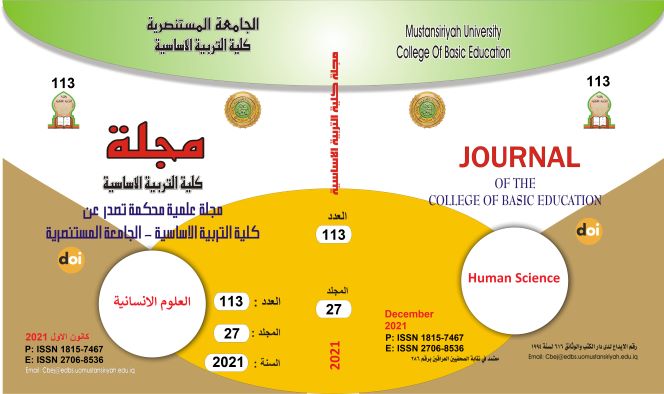The image of the other in the poetry of Abi Jaafar Ahmed bin Saeed (559) AH- Analytical study
Main Article Content
Abstract
The voice of the other rises in many topics and poetic purposes.. the Arab poet is keen to highlight these psychological aspects in his poetic text, as he is guided within his poetic experience, diagnosing the other in a subjective dialectic, defining it through the behaviors of events and emotional connotations and characters. It does not call for strangeness in the presence of these subjective topics in the joints of literature, within the lives of Arabs, ancient and modern, with the changing and moving trends of society in dissonant movements, because the other is an existential stage that unfolds with the existence of the ego in a life necessity and within intertwining contexts that cannot be separated. The look at the other is contingent upon looking at the poetic ego, which is an integral part of the discovery of the human self Perhaps the experience of the poet Abi Jaafar Ahmed bin Saeed (559 AH) falls in the direction of formulating the other, as most of his texts form in their systems the image of the other, reconciled and different, and what is between coalition and difference in the ego and the other. The poet Abi Jaafar relied on observing these images within the course of a luxurious language, capturing words in grammatical and orderly methods, and connecting the end of it with various types of artistic images and images based on the senses. Within well-thought-out artistic rhythms, his tool was to bring out the other in harmonious images consistent with the melodies of his passion and psychological vibration. Therefore, the other in the poetry of Abi Jaafar was our goal to search in an analytical study, within the harmonious poetic choices.
Article Details

This work is licensed under a Creative Commons Attribution-ShareAlike 4.0 International License.
